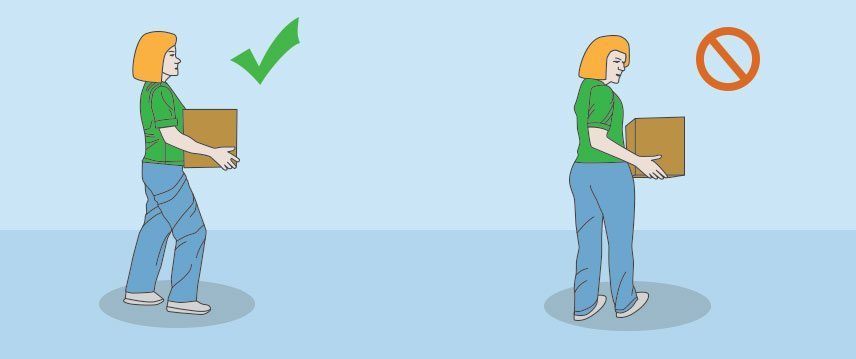There is no doubt that during some part of the moving day, you are going to find yourself in some kind of stressful situation or another. Although it’s actually quite rare that the whole day is spent in a state of fret and apprehension, there are still checks to be ticked off, calls to be made and boxes to count.
So, the big day is here, what to do?

Look after the keys
The first thing to do is to check whether your estate agent has a set of keys and alarm details before 12 noon on the day of completion.
If your removal company have told you that your move will only take half a day or if you’re moving into store, this information is even more essential. If your move is only half a day you need to check not only that you will have your keys on time, but that you will be out of the property so that your buyers can move in. Lack of communication around this issue can lead to additional payments on the day for both you and other people in your chain.
You also need to advise your solicitor as to how you may be contacted on moving day.
Before you hand over the final set however, make sure that you have checked every room and that all your boxes and containers have arrived at your new home.
Also make sure that you check the removal van is empty before the removal team leave your new property. The removal men won’t mind at all; in fact they would much rather you had a quick look around the back of the van than get back to the depot and realise they still have one of your plant pots and a table leg!
Sort your gas and electricity out one final time
Remember to turn off all plug sockets in the house to ensure that not only is it safe, but also so you can record an accurate meter reading. Keep a note of the reading and the date that you took it just in case you don’t agree with your final bill. Check also to see if you are on a fixed term tariff, as you may be charged to end your contract early.
The same goes for your new home, but it if it has an economy 7 meter, you might need to find out which readings are for day and for night. Also, it is worth contacting your supplier to see how to use your energy in the most efficient way. If you happened to have moved in with a prepayment meter, you will need to get your own from the supplier. Using the previous occupant’s key means that any money you pay may be credited to the previous occupant’s account.
It’s also an idea to leave a note for the people moving into the home so that they know which suppliers they need to contact. This should be given through the landlord, estate or letting agent.
Maximising your Boxes is important
Another part of this guide looked at 12 tips to help you pack better, and box packing is an important part of the moving process, simple things like stacking things like CDs and DVDs together or putting a bit of newspaper between plates can mean the difference between broken crockery and a heavenly first meal in your new home.
Don’t forget to make use of all that spare space inside shoes, vases, decorative boxes and all those other space wasters when packing up your stuff. The absolute must is to ensure you have good quality boxes, that will take the weight of what you are putting inside. Have a look at our Box Shop if you want an idea of some sturdy boxes for packing.
Ensure you know how to lift and handle heavy goods and boxes
Although this may sound a little silly, it is estimated that during 2013, an estimated 1.6 million working days were lost due to handling injuries, with the average injury lasting 10.8 days according to the Government.
To avoid any such injury, it is important to take a few things into account:
- Ensure that no one is carrying too much weight, and that there are regular rest stops.
- Before picking up a box, it is important to know just how heavy that box is and whether the weight will shift while it is being carried.
- Keep an eye out for the weather. No matter what distance you’re carrying the boxes, it’s important to know just how slippery the floor is going to be, or depending on what you’re carrying, how windy it is.
- If you can, avoid lifting all boxes from floor level or above the shoulders, this is especially important for heavier boxes.
- Ensure that the route that you are to take is clear of objects on the floor and call out before going through doors or around corners.
- If you are handling a particularly heavy box, assess whether it is possible for two people to carry it, or if it can be broken down into smaller pieces.
Handling techniques
- Ensure to keep the load close to your waist. When you it, try and keep the object as close to your body as possible.
- If you are travelling a long distance, it might be an idea to arrange a rest area in the form of a table or bench.
- If there is only you carrying a weight, keep the heavier side of the box or load next to your body.
- Adopt a stable position so that your feet are apart with one leg slightly forward. For the moving day, try and avoid tight clothing or unsuitable footwear.
Lifting techniques
In a workplace, there are general guidelines for lifting, and these can also be applied to the household.
No single man should attempt to lift an object heavier than 25kg and no woman should attempt to lift anything more than 16kg.
This isn’t set however, and certain factors can change the maximum load that a person should lift. For instance, if you are lifting above shoulder height, men should not lift anything above 10kg and women above 7kg.
The weight drops once more for objects that should be held away from the body, with a maximum load of 5kg for men and 3kg for women.
It is also dangerous to assume that a larger friend or family member might be able to lift an object without injury.


Five tips to make you feel at home straight away
Once all the heavy lifting is done, most of the boxes are in the correct rooms, beds put together and appliances switched on, it’s time to make your new house a home.
But how?
- If you can, treat people who have helped to a takeaway or some fish and chips. If they happen to drink, there’s nothing better than a cold beer or a glass of wine after a day’s heavy lifting. After all, there’s nothing wrong with starting some memories on the very first day.
- Ensure that your favourite ornaments and devices are right where they should be. Although the first few days might feel a little foreign, having your much loved guitar or games console on hand is a great comfort.
- Work out not only how you want your rooms to look, but also, how you want them to feel. Are you a peaceful person for example? Do you want a room for reading or one for music? Work out what matters to you and how you want this to play out in your home.
- That said, your home should not be ruled by your head, but your heart. If you enjoy certain colours, smells and materials, there’s no harm in getting those in for you to come home to.
- Keep your home evolving. There’s nothing worse than a home stuck in a time warp. Try and buy something new for it, no matter how small, every month to keep it alive and enjoyable for you and your friends and family.




